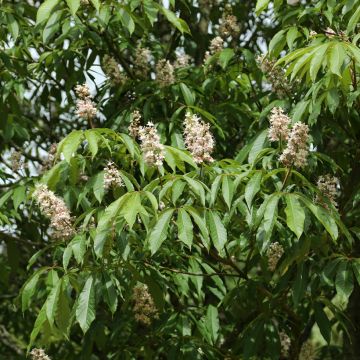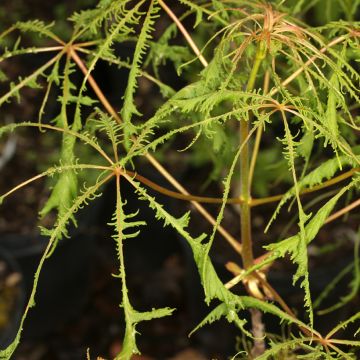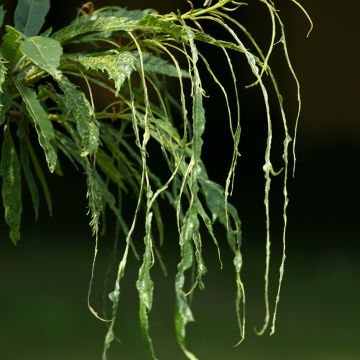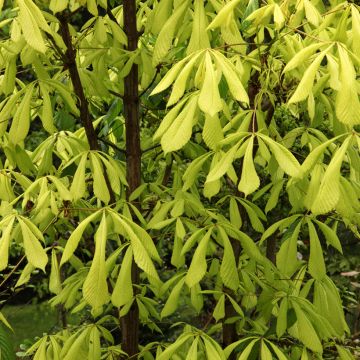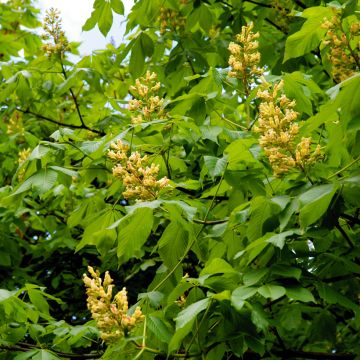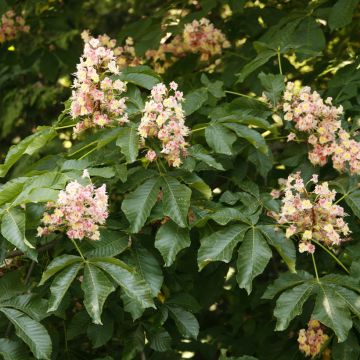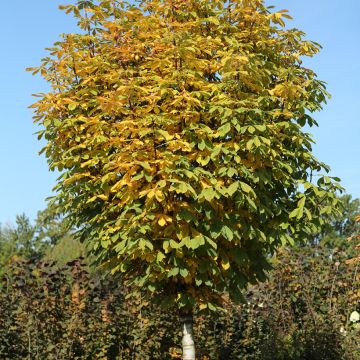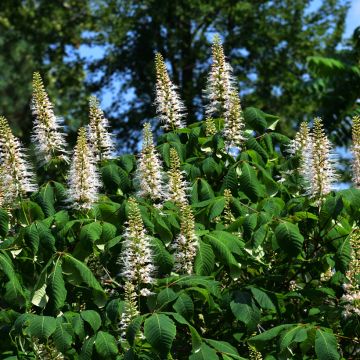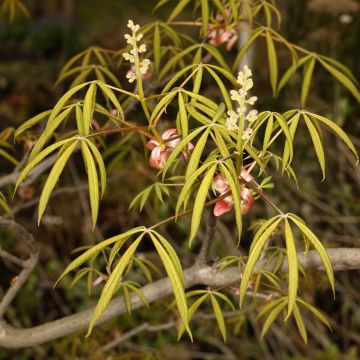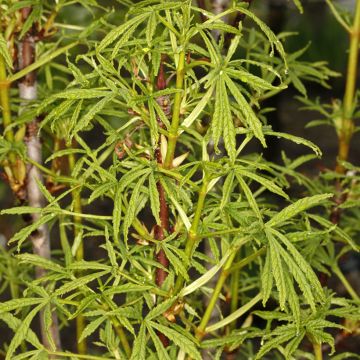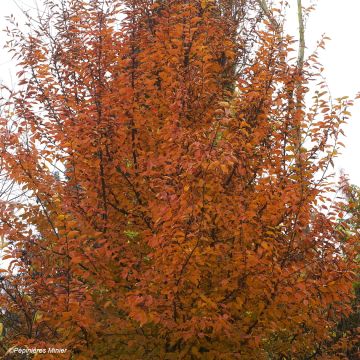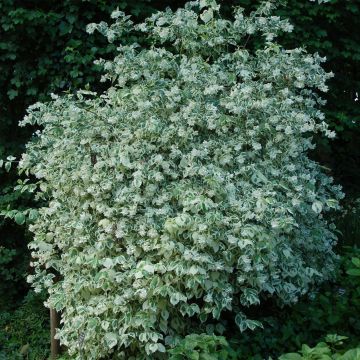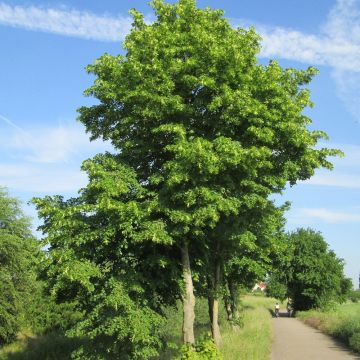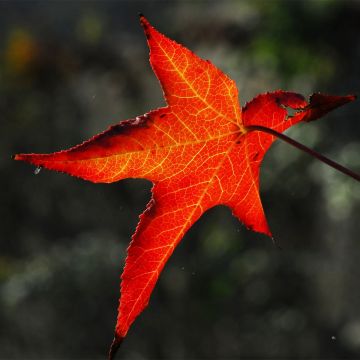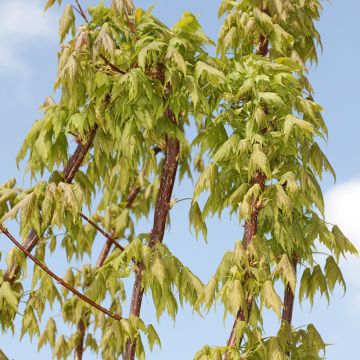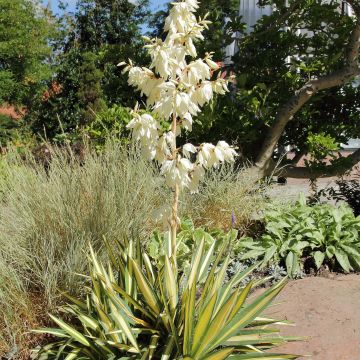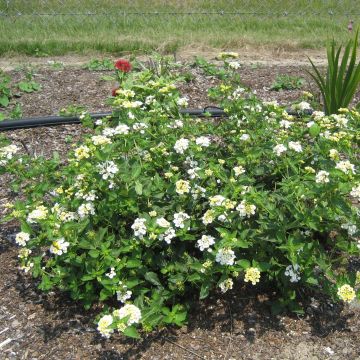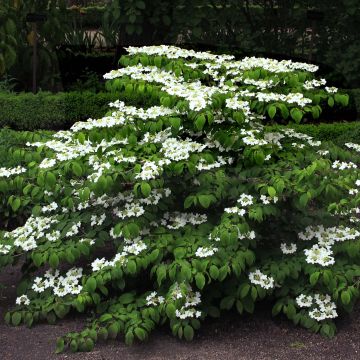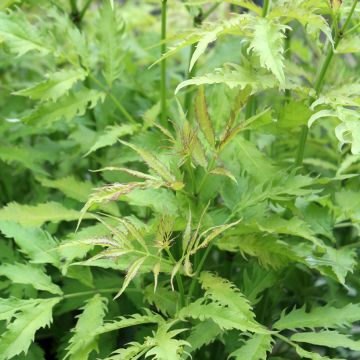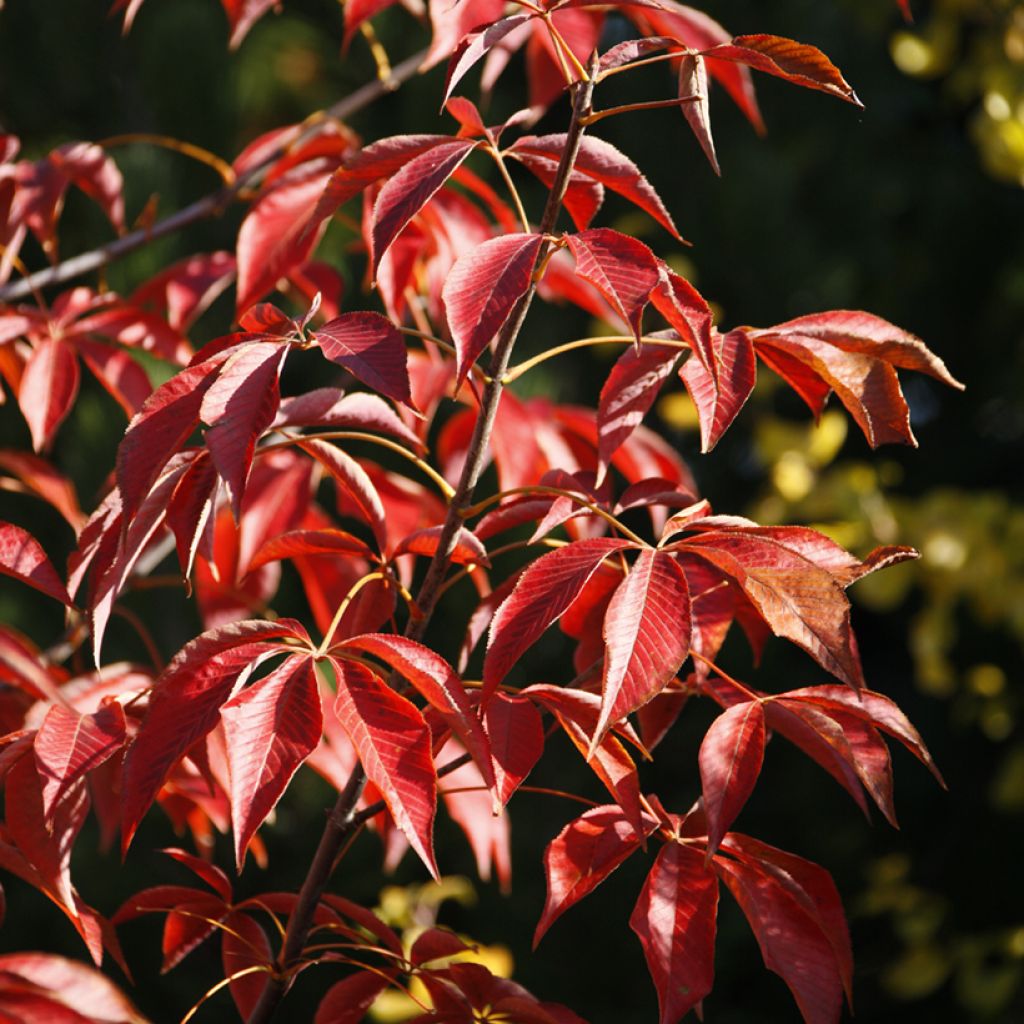

Aesculus glabra October Red - Ohio buckeye
Aesculus glabra October Red - Ohio buckeye
Aesculus glabra October Red
Ohio Buckeye, Fetid Buckeye
This item cannot be shipped to the selected country
Oversize package delivery charge from €6.90
More information
Oversize package delivery charge from €6.90
More information
Schedule delivery date,
and select date in basket
This plant carries a 24 months recovery warranty
More information
We guarantee the quality of our plants for a full growing cycle, and will replace at our expense any plant that fails to recover under normal climatic and planting conditions.
Oversize package: home delivery by special carrier from €6.90 per order..
Express home delivery from €8.90.
Does this plant fit my garden?
Set up your Plantfit profile →
Description
The 'Aesculus glabra 'October Red' is a selection of the Ohio buckeye that stands out for its fiery red autumn foliage, as vibrant as that of a Virginia creeper. This deciduous tree, of modest stature, with a rounded crown, also offers a melliferous spring flowering in the form of small pale yellow candles. Its elegant foliage, similar to that of the horse chestnut, is however finer and coppery when it appears in spring. Accommodating, this horse chestnut prefers non-limestone and not too arid soils.
The Aesculus glabra, like all horse chestnuts, now belongs to the Sapindaceae family. It is a species native to North America, particularly the eastern and central regions of the United States. 'October Red' is a cultivar of uncertain origin, selected for its splendid autumn foliage and slightly less vigorous growth. This horse chestnut, of rather slow growth, forms a trunk topped by a rounded crown. Ultimately, it reaches between 4 and 6 metres in height (sometimes 8 metres) with a spread of 4 metres. Cultivation conditions, particularly soil richness and freshness, have a significant impact on its growth. In winter, its branches bear small smooth, non-sticky buds. The young leaves of this horse chestnut are coppery. The mature leaves are green, compound, palmate, small and narrow, attached to the branch by a short petiole. In early autumn, they turn scarlet red and then fall to the ground. Flowering occurs in May or June, depending on the climate. It takes the form of yellowish flowers gathered in small panicles that appear in the upper part of the crown. They are not very visible in the tree's canopy but attract bees. After pollination, fruits form. The fruit is a tough capsule containing one, two, or three seeds. The mature seed is dark chocolate brown to black, smooth and shiny, with a large light-coloured hilum that resembles an eye.
The 'Aesculus glabra 'October Red' can be used as a standalone specimen, but also accompanied by large shrubs or other small trees. For example, with flowering dogwoods, which are interesting for their beautiful June flowering and autumn colours. Also with purple-leaved beeches, such as 'Purple Fountain' or 'Dawyck Purple'. Or even with the Amelanchier canadensis (Canadian serviceberry), covered in white flowers in spring and colourful autumn foliage.
Plant habit
Flowering
Foliage
Botanical data
Aesculus
glabra
October Red
Sapindaceae
Ohio Buckeye, Fetid Buckeye
Cultivar or hybrid
Other Aesculus - Horse Chestnut
Planting and care
The Aesculus glabra 'October Red' should be planted in spring or autumn in a deep, slightly acidic, or even acidic soil, in a sunny or semi-shaded location. It develops a deep taproot that allows it to tolerate some drought once mature. Some sources indicate that its foliage is more colourful during drier years. Digging over the soil is recommended before planting. Reserve enough space for it, as it can reach a width of 4-5 m. Water and mulch to maintain soil moisture. Fertilise in spring. Prune in February, removing dead branches if necessary. It can be susceptible to attacks from June bugs, scale insects, and diseases such as canker or leaf spot.
Planting period
Intended location
Care
This item has not been reviewed yet - be the first to leave a review about it.
Striking foliage shrubs
Haven't found what you were looking for?
Hardiness is the lowest winter temperature a plant can endure without suffering serious damage or even dying. However, hardiness is affected by location (a sheltered area, such as a patio), protection (winter cover) and soil type (hardiness is improved by well-drained soil).

Photo Sharing Terms & Conditions
In order to encourage gardeners to interact and share their experiences, Promesse de fleurs offers various media enabling content to be uploaded onto its Site - in particular via the ‘Photo sharing’ module.
The User agrees to refrain from:
- Posting any content that is illegal, prejudicial, insulting, racist, inciteful to hatred, revisionist, contrary to public decency, that infringes on privacy or on the privacy rights of third parties, in particular the publicity rights of persons and goods, intellectual property rights, or the right to privacy.
- Submitting content on behalf of a third party;
- Impersonate the identity of a third party and/or publish any personal information about a third party;
In general, the User undertakes to refrain from any unethical behaviour.
All Content (in particular text, comments, files, images, photos, videos, creative works, etc.), which may be subject to property or intellectual property rights, image or other private rights, shall remain the property of the User, subject to the limited rights granted by the terms of the licence granted by Promesse de fleurs as stated below. Users are at liberty to publish or not to publish such Content on the Site, notably via the ‘Photo Sharing’ facility, and accept that this Content shall be made public and freely accessible, notably on the Internet.
Users further acknowledge, undertake to have ,and guarantee that they hold all necessary rights and permissions to publish such material on the Site, in particular with regard to the legislation in force pertaining to any privacy, property, intellectual property, image, or contractual rights, or rights of any other nature. By publishing such Content on the Site, Users acknowledge accepting full liability as publishers of the Content within the meaning of the law, and grant Promesse de fleurs, free of charge, an inclusive, worldwide licence for the said Content for the entire duration of its publication, including all reproduction, representation, up/downloading, displaying, performing, transmission, and storage rights.
Users also grant permission for their name to be linked to the Content and accept that this link may not always be made available.
By engaging in posting material, Users consent to their Content becoming automatically accessible on the Internet, in particular on other sites and/or blogs and/or web pages of the Promesse de fleurs site, including in particular social pages and the Promesse de fleurs catalogue.
Users may secure the removal of entrusted content free of charge by issuing a simple request via our contact form.

































